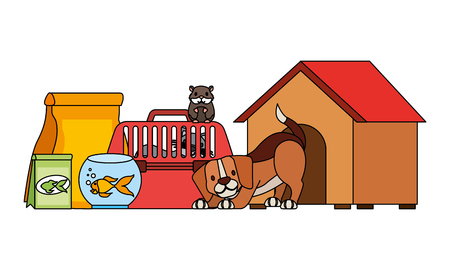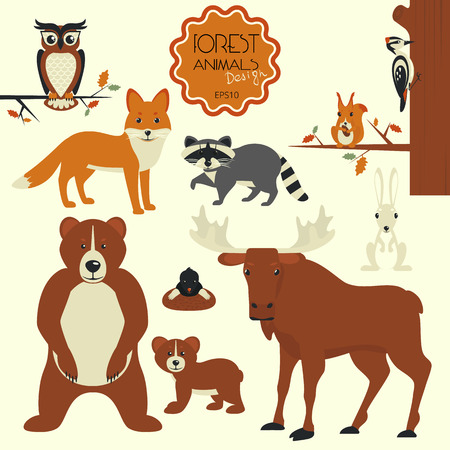1. The Basics of Feline Nutrition
Understanding what to feed your cat starts with knowing their unique dietary needs. Cats are obligate carnivores, which means they rely on a diet primarily composed of animal-based proteins. Unlike omnivores, such as humans or dogs, cats require specific nutrients that can only be found in animal products.
Why Are Cats Obligate Carnivores?
Cats have evolved to thrive on a meat-based diet. Their bodies are designed to digest and utilize nutrients from animal sources more efficiently than plant-based ones. This means they need higher levels of protein and certain essential nutrients that are only found in meat.
Essential Nutrients for Cats
A well-balanced feline diet includes the following key nutrients:
| Nutrient | Why Its Important | Main Sources |
|---|---|---|
| Protein | Supports muscle development, immune function, and overall health. | Meat, poultry, fish |
| Fats | Provides energy and supports skin and coat health. | Animal fats, fish oils |
| Taurine | An essential amino acid for heart health, vision, and digestion. | Poultry, fish, organ meats |
| Vitamins (A, D, E, B-complex) | Supports various bodily functions like vision, metabolism, and immune system. | Liver, fish oils, eggs |
| Minerals (Calcium, Phosphorus, Magnesium) | Aids in bone strength, nerve function, and overall metabolic processes. | Bones, meat, organs |
The Role of Water in a Cat’s Diet
Cats naturally have a low thirst drive because their ancestors obtained most of their hydration from fresh prey. This makes proper hydration crucial. Wet food can help ensure your cat gets enough moisture in their diet since dry kibble alone may not provide sufficient water intake.
Avoiding Common Nutritional Mistakes
- Avoid Plant-Based Diets: Cats lack the necessary enzymes to efficiently process plant proteins.
- No Dog Food for Cats: Dog food lacks essential nutrients like taurine that cats need to stay healthy.
- Lack of Variety: Feeding only one type of food can lead to nutritional deficiencies over time.
- Treats in Moderation: Too many treats can lead to obesity and unbalanced nutrition.
A proper understanding of feline nutrition ensures your cat stays healthy and happy. Providing a diet rich in high-quality animal proteins and essential nutrients will support their overall well-being.
2. Wet vs. Dry Cat Food: Pros and Cons
Choosing between wet and dry cat food can be challenging for pet owners. Each type has its benefits and drawbacks, so understanding their differences can help you make the best decision for your cat’s health and lifestyle.
Hydration Benefits
One of the most significant differences between wet and dry cat food is moisture content. Wet food contains around 70-80% water, which helps keep your cat hydrated, especially if they don’t drink much water on their own. Proper hydration supports kidney function, urinary health, and overall well-being.
On the other hand, dry food has a much lower moisture content (typically around 10%), which means cats must drink more water to stay hydrated. Some cats may not drink enough, increasing the risk of urinary tract issues.
Dental Health Considerations
A common belief is that dry food helps clean a cat’s teeth by reducing plaque and tartar buildup. While kibble may have some abrasive effects, it does not replace regular dental care such as brushing or veterinary cleanings.
Wet food, being soft, does not provide the same level of chewing resistance as dry kibble. However, it does not necessarily contribute to dental problems if proper oral hygiene is maintained.
Comparing Wet and Dry Cat Food
| Feature | Wet Food | Dry Food |
|---|---|---|
| Moisture Content | High (70-80%) | Low (10%) |
| Hydration Support | Excellent for hydration | Cats need to drink extra water |
| Convenience | Spoils quickly after opening | Easier to store and serve |
| Dental Health | No chewing benefits but not harmful | Mild abrasive effect on teeth |
| Nutritional Density | Higher protein and moisture content | Densely packed with nutrients per bite |
| Shelf Life & Cost | Shorter shelf life & generally more expensive | Longer shelf life & often more affordable |
Selecting the Right Option for Your Cat
The choice between wet and dry food depends on your cat’s individual needs. If your cat struggles with hydration or urinary issues, wet food might be the better option. If convenience and affordability are priorities, dry food could be a good fit.
A combination diet—offering both wet and dry food—can provide balanced nutrition while addressing hydration and dental concerns. Always consult your veterinarian to determine the best diet based on your cat’s age, health status, and preferences.

3. Homemade vs. Commercial Cat Food
When it comes to feeding your cat, you may wonder whether homemade meals or commercial cat food is the better choice. Both options have their benefits and risks, so its important to understand what each offers and how to ensure your feline friend gets the balanced nutrition they need.
Benefits and Risks of Homemade Cat Food
Preparing homemade meals for your cat gives you full control over ingredients, which can be beneficial if your cat has food allergies or sensitivities. However, creating a nutritionally complete diet requires careful planning. Without proper knowledge, homemade diets can lead to nutrient deficiencies or imbalances.
Pros of Homemade Cat Food:
- Control over ingredients and quality
- Avoids artificial additives and preservatives
- Customizable for cats with dietary restrictions
Cons of Homemade Cat Food:
- Difficult to balance essential nutrients
- Requires time and effort to prepare
- May need supplementation with vitamins and minerals
Commercial Cat Food: Convenience and Nutrition
Store-bought cat food is formulated to meet feline nutritional requirements, making it a convenient option for pet owners. High-quality commercial foods are tested to ensure they contain the right balance of proteins, fats, vitamins, and minerals. However, not all brands are created equal, so its crucial to choose reputable products.
Types of Commercial Cat Food:
| Type | Description | Pros | Cons |
|---|---|---|---|
| Dry Kibble | A crunchy, processed food with a long shelf life. | Convenient, affordable, helps with dental health. | Lower moisture content, may contain fillers. |
| Canned Wet Food | A moist food with higher protein content. | Hydrating, palatable, often higher in protein. | Spoils quickly after opening, more expensive. |
| Raw Diet (Commercial) | A pre-packaged raw food diet designed for cats. | Mimics a natural diet, high in protein. | Potenial bacterial contamination risk, costly. |
Ensuring a Balanced Diet for Your Cat
If you choose to feed your cat homemade food, consult a veterinarian or pet nutritionist to create a properly balanced meal plan. For those opting for commercial food, look for products that meet AAFCO (Association of American Feed Control Officials) standards. A combination of wet and dry food may provide the best balance of hydration and nutrition for your cats overall health.
4. Common Ingredients to Avoid
When choosing food for your cat, its essential to be aware of harmful ingredients that could negatively impact their health. Some additives, fillers, and allergens may cause digestive issues, allergic reactions, or long-term health problems. Below are some common ingredients you should avoid in your cat’s diet.
Artificial Additives
Many commercial cat foods contain artificial preservatives, colors, and flavors to enhance taste and extend shelf life. However, these additives can be harmful to your cats health.
| Ingredient | Potential Harm |
|---|---|
| BHA (Butylated Hydroxyanisole) | May be linked to cancer and other health issues. |
| BHT (Butylated Hydroxytoluene) | Potential carcinogen that can affect liver and kidney function. |
| Ethoxyquin | A preservative that may cause liver damage and allergic reactions. |
| Artificial Colors (e.g., Red 40, Blue 2) | No nutritional value; may trigger allergies or behavioral issues. |
Fillers with Little Nutritional Value
Cats are obligate carnivores, meaning they require a meat-based diet. However, some cat foods include excessive fillers that provide little nutritional benefit and may contribute to obesity or digestive problems.
| Ingredient | Why to Avoid |
|---|---|
| Corn & Corn Gluten Meal | Poor protein source for cats; may lead to allergies. |
| Wheat & Wheat Gluten | Difficult for cats to digest; potential allergen. |
| Soy & Soy Products | Might cause thyroid issues and food sensitivities. |
| Poultry By-Products | Lacks quality nutrition; may contain low-grade animal parts. |
Potential Allergens and Irritants
Cats can develop food allergies or sensitivities over time. Certain ingredients are more likely to trigger adverse reactions such as skin irritation, vomiting, or diarrhea.
- Dairy Products: Many cats are lactose intolerant and may experience digestive upset from milk or cheese.
- Fish-Based Diets: While some fish is fine in moderation, an excessive fish-based diet may contribute to mercury exposure and thiamine deficiency.
- An Excess of Carbohydrates: Cats have a limited ability to process carbohydrates, so diets high in grains or starchy vegetables can lead to weight gain and diabetes.
Selecting a Healthier Alternative
Avoiding these harmful ingredients will help ensure your cat gets the best possible nutrition. Look for high-quality cat foods with real meat as the primary ingredient, minimal fillers, and no artificial additives. Reading labels carefully and understanding what goes into your cat’s food is one of the best ways to keep them happy and healthy!
5. Choosing the Best Diet for Your Cat’s Life Stage
Just like humans, cats have different nutritional needs at various stages of life. From playful kittens to senior cats enjoying their golden years, providing the right diet ensures they stay healthy and active. Let’s break down how to choose the best food based on your cat’s age.
Nutrition for Kittens (0-12 Months)
Kittens grow rapidly and require a diet rich in protein, fat, and essential nutrients to support their development. Look for food labeled as “kitten formula,” which provides the extra calories and nutrients they need.
Key Nutritional Needs:
- High protein content for muscle development
- Healthy fats for brain and vision growth
- DHA and taurine for cognitive and heart health
- Easily digestible ingredients
Nutrition for Adult Cats (1-7 Years)
Once your cat reaches adulthood, their energy needs stabilize. A balanced diet with high-quality protein, moderate fat, and controlled carbohydrates helps maintain a healthy weight and overall well-being.
Key Nutritional Needs:
- High-quality animal protein
- Adequate fiber for digestion
- Essential vitamins and minerals
- Proper hydration through wet or dry food combinations
Nutrition for Senior Cats (7+ Years)
Aging cats may experience slower metabolism, joint issues, or kidney concerns. Senior cat food is formulated with lower calories, higher fiber, and added joint-supporting nutrients.
Key Nutritional Needs:
- Easily digestible proteins
- Lower fat content to prevent obesity
- Joint-supporting supplements like glucosamine
- Mildly increased fiber for digestive health
- Sufficient moisture to support kidney function
Cats’ Nutritional Needs by Life Stage: A Quick Comparison
| Life Stage | Main Dietary Focus | Recommended Food Type |
|---|---|---|
| Kittens (0-12 months) | Growth & Development | High-protein kitten formula (wet & dry) |
| Adult Cats (1-7 years) | Maintenance & Weight Control | Balanced adult cat food (wet & dry) |
| Seniors (7+ years) | Aging Support & Joint Health | Easily digestible senior formula (wet preferred) |
Selecting the right diet based on your cat’s life stage ensures they get the proper nutrition needed to thrive. Always consult with your veterinarian before making major dietary changes to ensure your feline friend stays happy and healthy at every stage of life.


